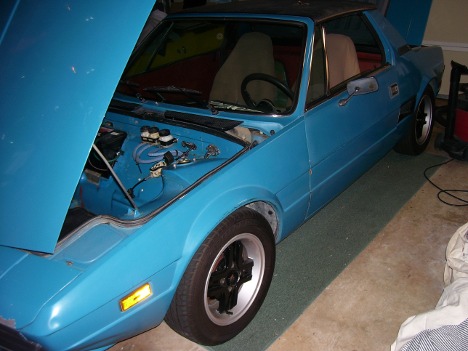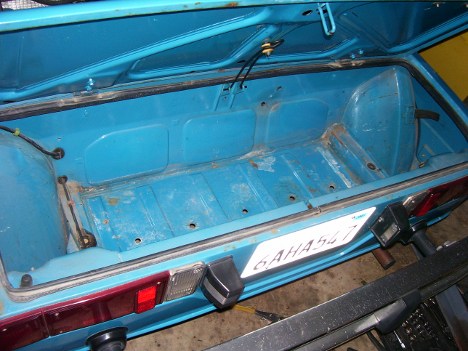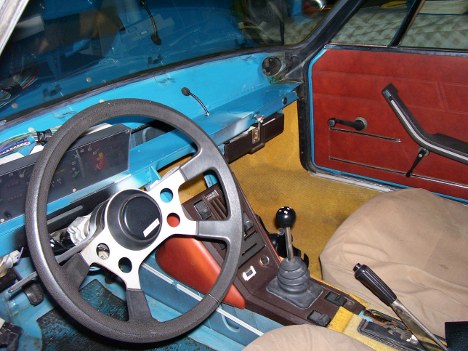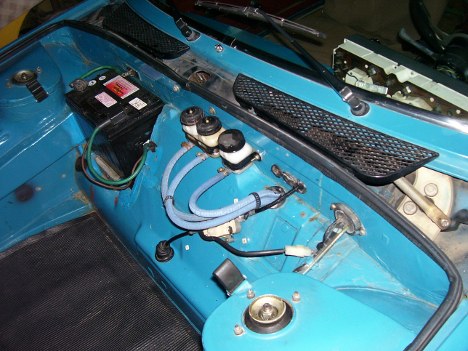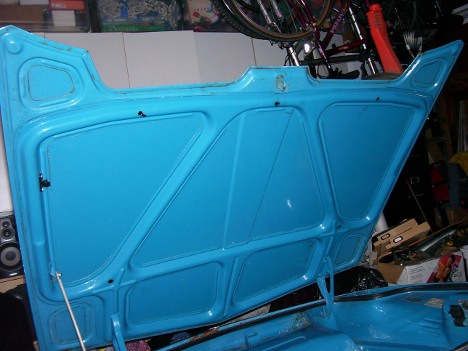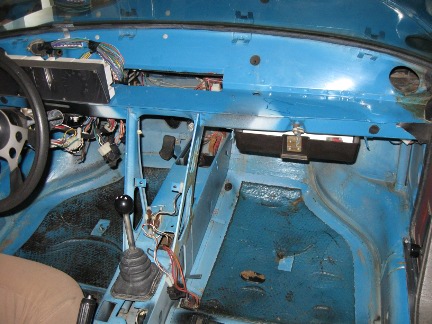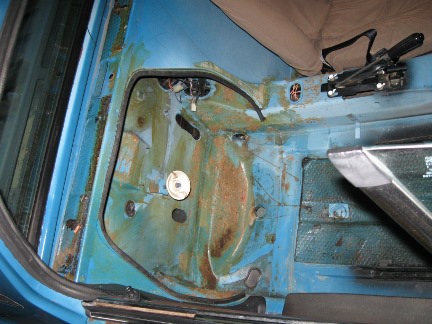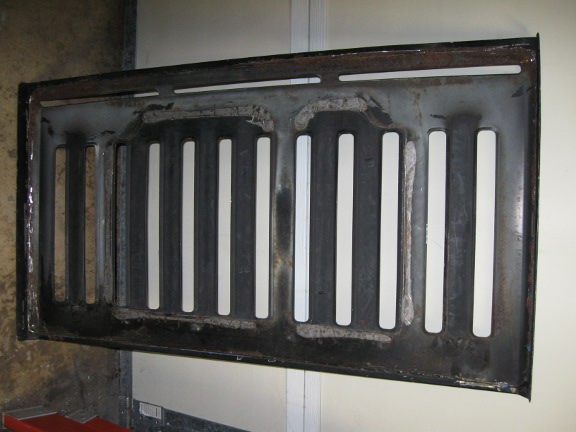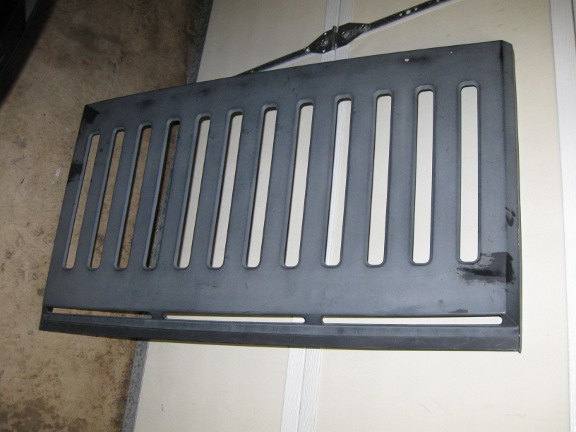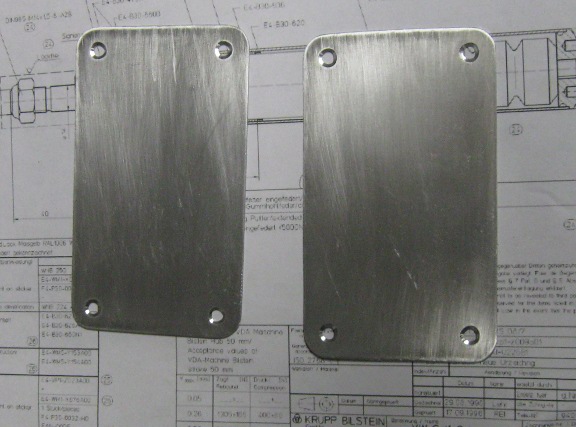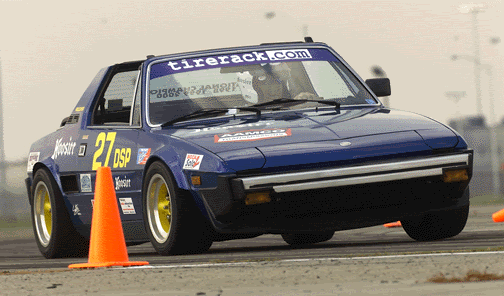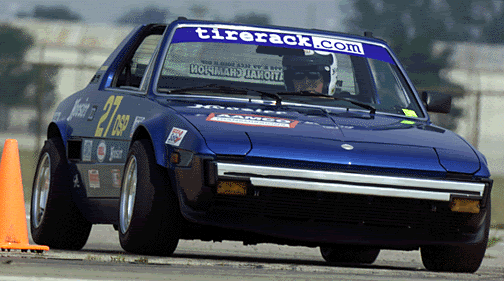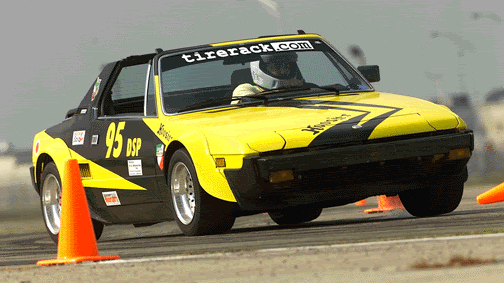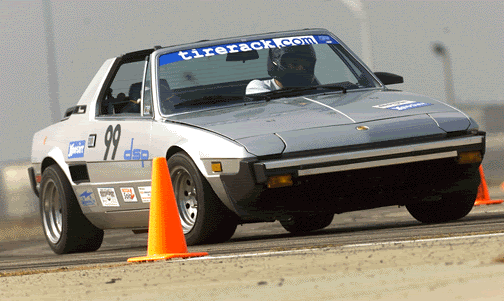spiggs
True Classic
First some background. My car is a 1975 X1/9. I am going to use it as my autocross/fun car. I like stripped down no-nonsense project cars and looking through the regs the best fit seems to be GP. We also have a good group of GP cars of various prep levels locally, a "run what you brung" street tire class, and of course DP/XP so I would have options. The car will remain street registered and I am planning to drive to events but I don't expect a street car smooth ride. Eventually I'll flat tow but that is a ways off, probably when the kids are ready to participate.
I need help coming up with a plan. On my own I tend to lose focus and bounce around different ideas till projects die, so I am asking for help to keep me on track. Here is what I have so far.
The aforementioned 1975 X1/9 Mediterranean Blue with a small bit of rust in the nose and doors but very solid structurally. Has some poor quality damage repair on the driver’s side door.
Drive train - Stock 1300cc engine and 4 speed transmission, engine runs OK transmission is shot. All new engine mounts, cam belt, tensioner bearing.
Suspension - Cut rear springs front and back. Marginal KYB struts with good strut top mounts. New radius arm bushings, new steering rack bushings. CD91 wheels with new Sumi HTR200 185/60/13 tires.
Brakes - New hoses and master cylinder, good used reservoirs relocated to bulkhead with new lines.
Other parts not on car - 1 white good used drivers side door, new front suspension arms, 4 speed trans reconditioned, New Bilstein sport strut inserts for VW Rabbit but will fit stock housings with minor fab, 1 pair each 300lb and 400lb Eibach 2.5" x 8"springs, PBS B3 camshaft, PBS DCOE intake, IAP header, 1 Kirkey economy seat, used 1300cc short block, used 1500cc FI longblock, used bare 1500cc head.
Budget - Very small but not non-existent. Wife is supportive, family remains first
Time - Sporadic but not non-existent
Tools - Good set of basic tools plus both a Mig and Oxy/Act welder, Smithy bench top lathe, Air compressor.
Priorities - Reliability, Budget, Speed
OK help me come up with a plan, maintenance/mod list and priorities, what should I keep, what should I sell, what should be on my shopping list. I will update this thread with photos and progress. Thanks for any help.
Vince
I need help coming up with a plan. On my own I tend to lose focus and bounce around different ideas till projects die, so I am asking for help to keep me on track. Here is what I have so far.
The aforementioned 1975 X1/9 Mediterranean Blue with a small bit of rust in the nose and doors but very solid structurally. Has some poor quality damage repair on the driver’s side door.
Drive train - Stock 1300cc engine and 4 speed transmission, engine runs OK transmission is shot. All new engine mounts, cam belt, tensioner bearing.
Suspension - Cut rear springs front and back. Marginal KYB struts with good strut top mounts. New radius arm bushings, new steering rack bushings. CD91 wheels with new Sumi HTR200 185/60/13 tires.
Brakes - New hoses and master cylinder, good used reservoirs relocated to bulkhead with new lines.
Other parts not on car - 1 white good used drivers side door, new front suspension arms, 4 speed trans reconditioned, New Bilstein sport strut inserts for VW Rabbit but will fit stock housings with minor fab, 1 pair each 300lb and 400lb Eibach 2.5" x 8"springs, PBS B3 camshaft, PBS DCOE intake, IAP header, 1 Kirkey economy seat, used 1300cc short block, used 1500cc FI longblock, used bare 1500cc head.
Budget - Very small but not non-existent. Wife is supportive, family remains first
Time - Sporadic but not non-existent
Tools - Good set of basic tools plus both a Mig and Oxy/Act welder, Smithy bench top lathe, Air compressor.
Priorities - Reliability, Budget, Speed
OK help me come up with a plan, maintenance/mod list and priorities, what should I keep, what should I sell, what should be on my shopping list. I will update this thread with photos and progress. Thanks for any help.
Vince

